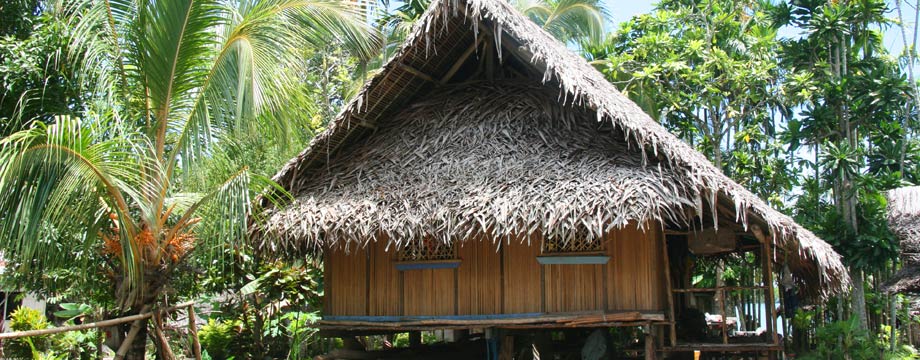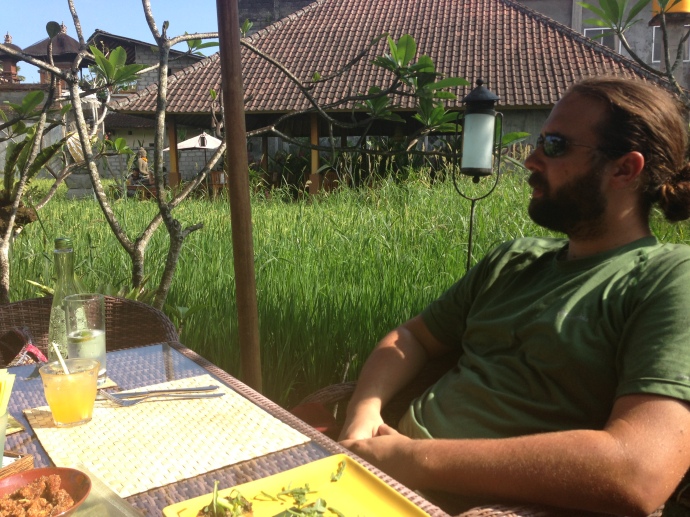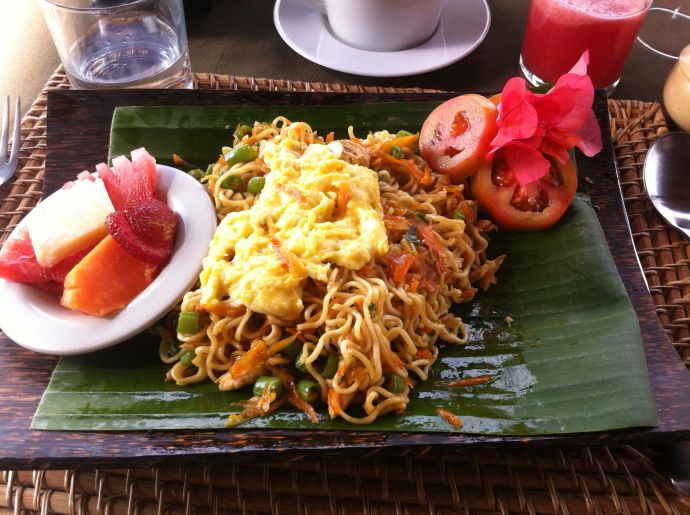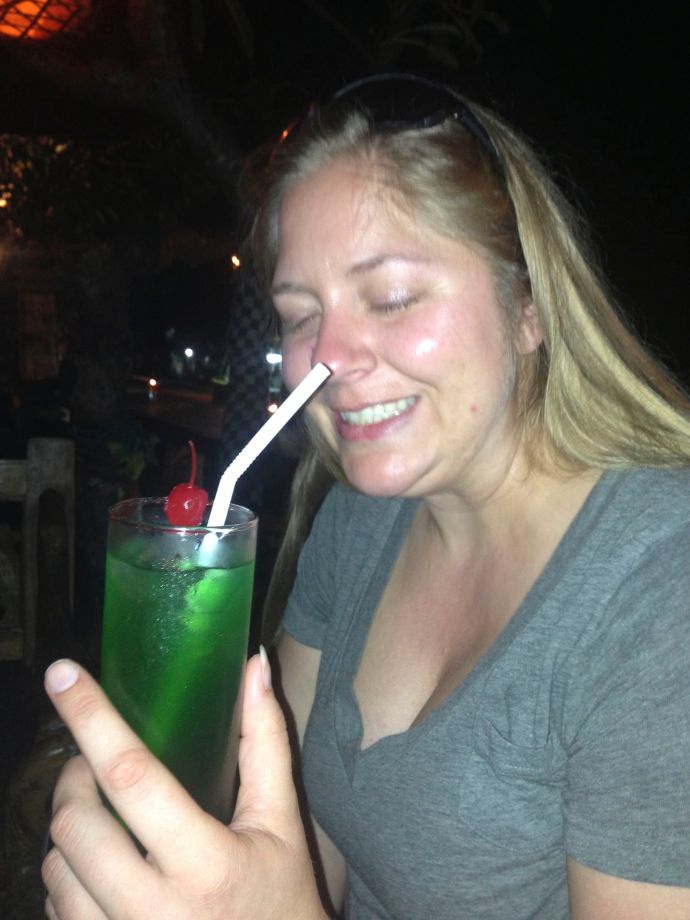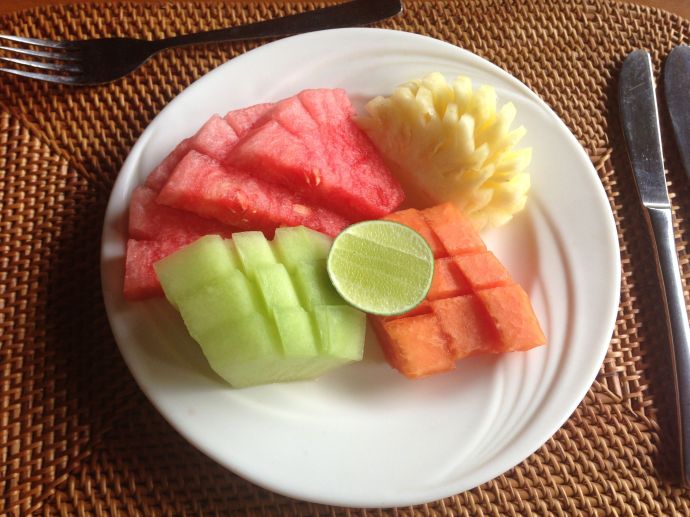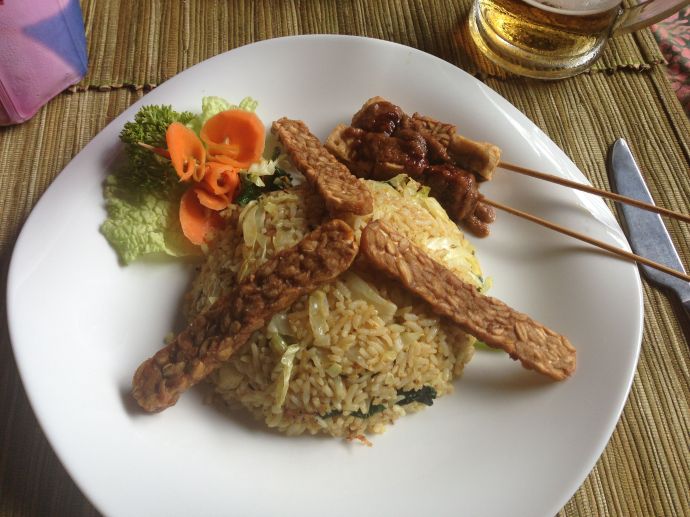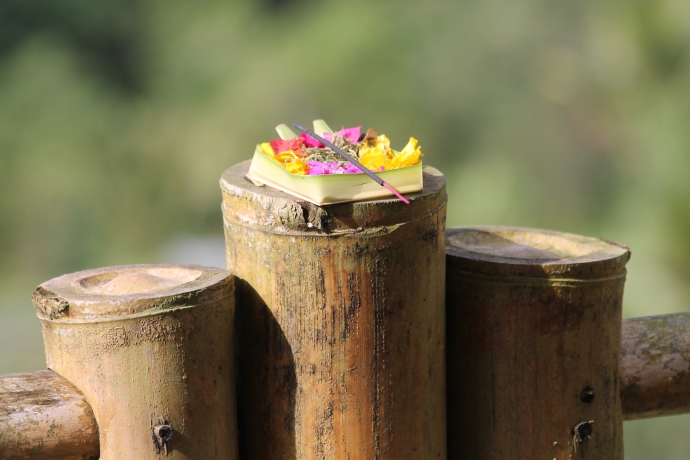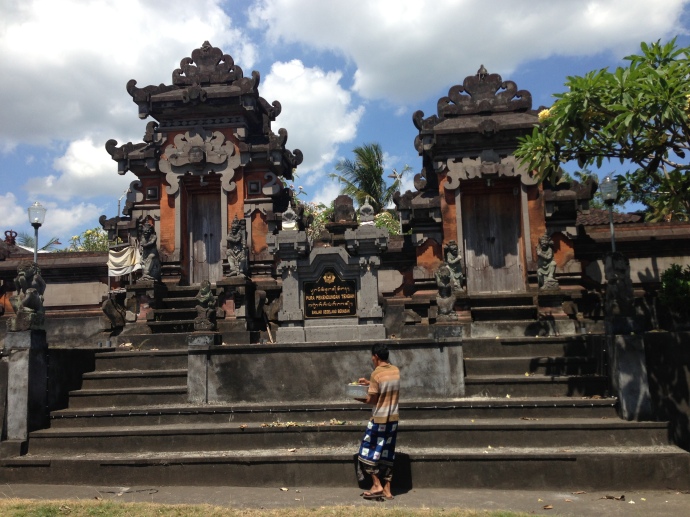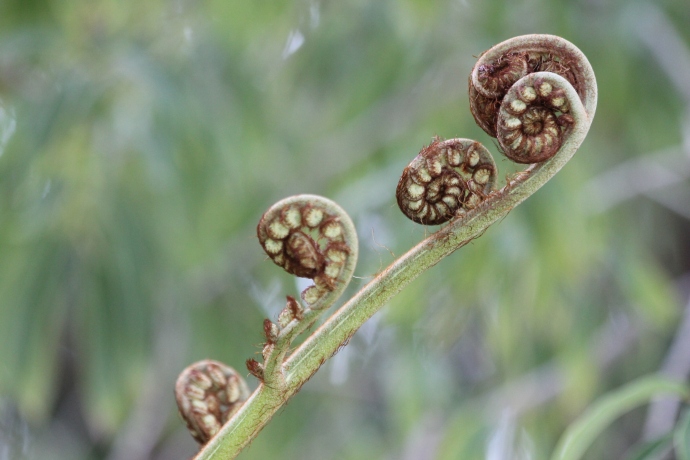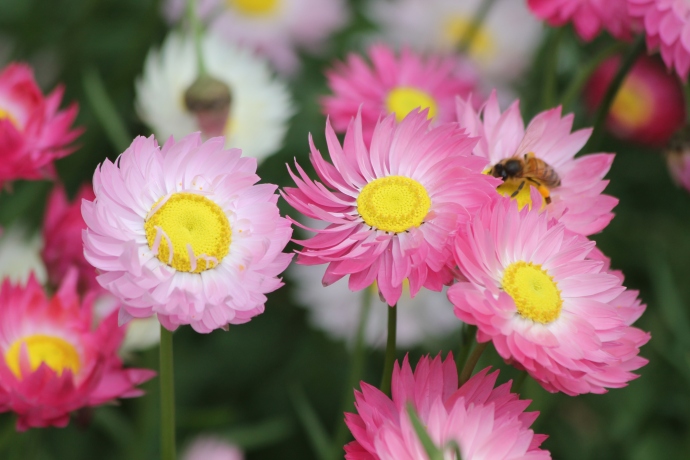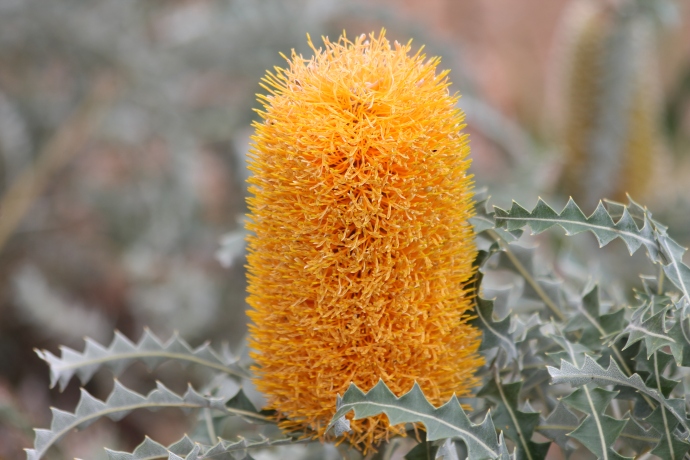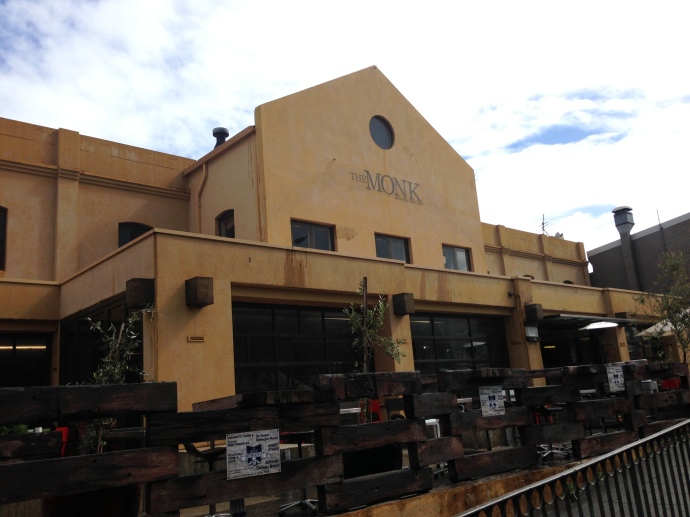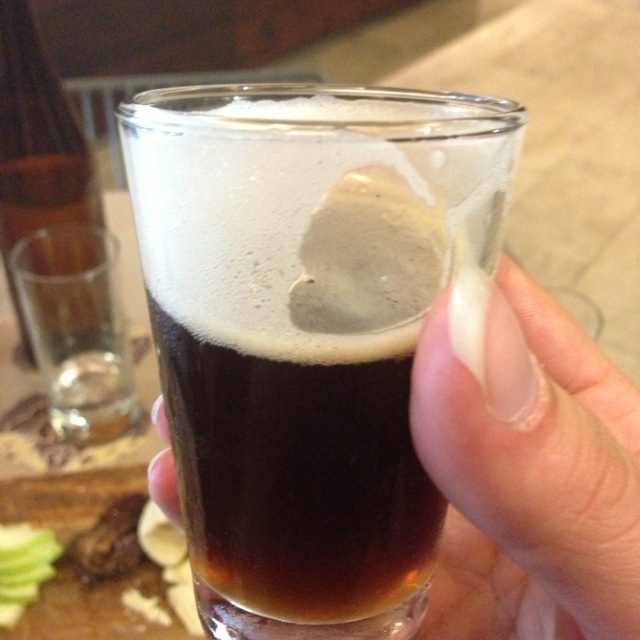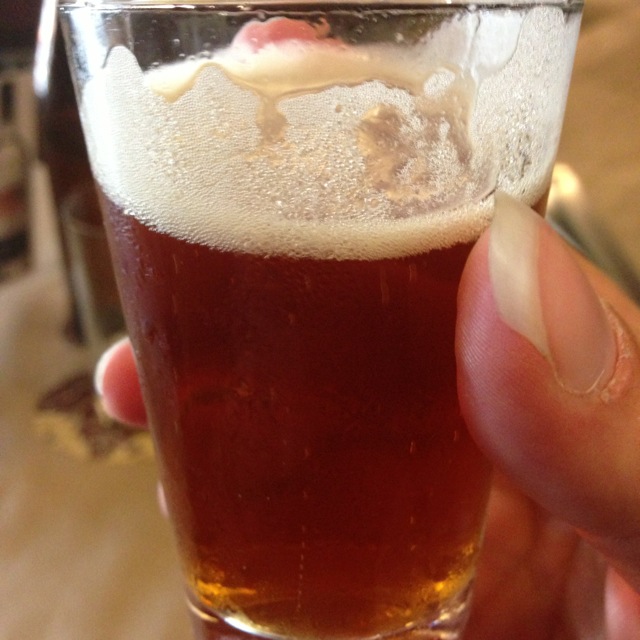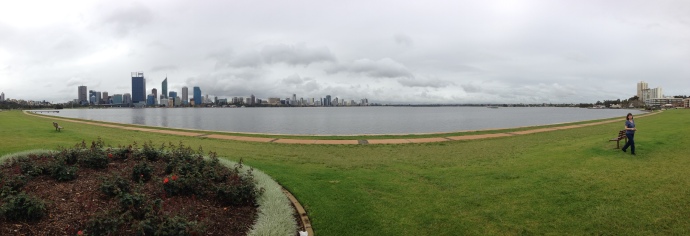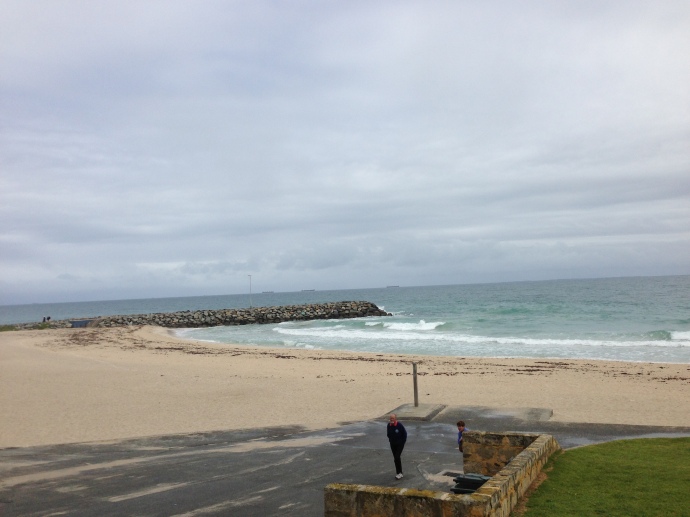Balinese food is delicious… especially if you like rice! Our experiences in Bali showed that it is very possible to vacation in Bali and never eat Balinese food; but why would you want to do that? Sure Balinese pizza is delicious too, but if you haven’t tried the signature nasi goreng [fried rice] or mie gorging [fried noodles], with some homemade sambal [sauce, typically spicy], in my opinion, you haven’t lived. During our travels I made sure to eat as much Balinese food as possible. The typical and traditional nasi goreng is a simple fried rice with vegetables, some egg, and typically a meat. Chicken was prevalent, most likely for multiple reasons including Indonesian Religions; one of which holds cows sacred and the other does not eat pork [2 of the 4 major religions as described in a previous post]. My other belief of the prevalence of chicken is that it is relatively inexpensive and chickens can be found EVERYWHERE. In fact, just take a cruise down the road and you are likely to see two chicken-related items: 1) large woven basket cages- each with a rooster in it for sale and 2) a motor bike with about 100 dozen eggs stacked on the back.
One fairly large difference between Balinese fried rice and typical American/Western Fried Rice [and I would assume this is also different from other countries that serve fried rice] is the oil that is used for cooking. In Bali, it is most frequently palm oil. This oil is a slightly different taste if you are used to eating food cooked with a different type of oil [ie, olive]. The nasi goreng that I ate typically consisted of rice, spinach or leafy greens of some sort, capsicum [pepper- usually red of a fairly mild variety], and shredded carrot. I often ordered my nasi goreng with chicken or just vegetables. Traditionally, nasi goreng is also served with a fried egg on top of the rice pile. The fried noodle dishes typically had Ramen-style [quick-cooking] noodles and the same list of veggies above along with cabbage. Both the fried rice and fried noodle dishes typically have their own flavor as well.
Sambal is type of secret sauce that is prevalent in Bali. While you can purchase bottled Sambal in a variety of flavors from the larger stores [ie more touristy] in Bali, real Sambal varies from family to family. Families develop their own recipe which may range from sweet and sour to extremely spicy. I loved every Sambal that my meals were cooked with! In addition to these two dishes, Bali also cooks a good deal of satay as wells as Ayam Betutu; a dish that consisted of slow cooked spiced chicken, rice and vegetables. One restaurant in particular comes to mind where I ordered this dish in Ubud—the hostess/manager told me that it is very traditional and she makes it almost every day.
Fruit is also very common throughout Bali and many night markets sell a large range of fruits from snake fruit [shaped like a small pear, it’s peel looks like snake skin, but it tastes like an apple] to pineapples [a smaller, lighter and less sweet variety than what you might find in say, Hawaii or Costa Rica, but still extremely delicious], to A TON of Watermelon [both red and yellow] to dragon fruit to mango to papaya to strawberries [there is a large strawberry portion of the island located near the mountains in the north-central region]. Fruit juices are common [crushed ice and fruit, usually some sugar].
Desserts typically consisted of fried or grilled banana and/or pineapple to fresh fruit to more typically-western dishes like cheesecake, depending on the area or restaurant where you were eating. While restaurants are found throughout Bali, more common are “Warungs” or small café-type places. Warungs range from tiny, dimly lit, hole-in-the-wall feed stops to extravagant, large, exquisitely decorated getaways. Don’t be fooled by appearance- just because a place looks a little off the beaten track, doesn’t mean the food won’t be just as if not more delicious than its larger competitor. Ice cream can also be found in Bali, however it tastes more like ice mixed with a bit of milk, if you are used to the sugary, fattening, western-counterpart.
Another important question revolves around drinks in Bali! You shouldn’t drink the tap water [not even the locals do!] Bottled water is prevalent and although it is a large waste of plastic and creation of trash, it is better than getting a water-borne illness or bacteria. In an effort to curb plastic bottle use and trash, many places will allow you to fill up your own water bottle or canteen from their large jugs of water. Alternatively, you could ask for a glass of water from their large jug rather than a bottle of water. Coffee and Tea are both found in abundance in Bali; the major difference between Western Coffee and Bali Coffee is that in Bali they do not do “drip coffee”. Instead, they simple finely ground the coffee beans and mix them into a cup of hot water and serve it. If you are not used to this type of coffee, it can take some getting used to—you will find grit at the bottom of your cup and the last few sips will be rich and thick.
The main beer found in Bali is Bintang. It’s tasty, refreshing, and found all over the place. Mixed drinks can be found in more touristy areas—look for more exotic drinks like passion fruit crushes [passion fruit, club soda, simple syrup, and ice] or even the Lovina Special “Level 15”: 15 different liquor mixed in a glass including dry vermouth, crème de menthe, gin, vodka, rum, whiskey, and bourbon] along with some ice, grenadine, lime juice, and topped off with soda water. It comes out bright green, tastes like cough medicine, and is one hell of a strong drink. The other direction to go with hard alcohol is to try the “Arak”; a liquor made from rice. It is potent and tastes a bit like whiskey. Traditional drinks using Arak include the Arak Attack [orange juice, grenadine, and Arak] or the Arak Honey [Arak, honey, and lime juice]. It’s definitely worth a try as the flavor changes greatly depending on the mixers you choose. Because not many Balinese people drink you may find that your bartender makes your drinks a bit strong so just be careful!
If you are a vegetarian, vegan, pescatarian, or carnivore- not to worry. You will find something to meet your needs. Vegetarian dishes are almost as prevalent as meat dishes and tofu and tempeh are huge. Be sure you try out the fried tempeh, it’s delicious! Depending on the warung or restaurant that you choose, you will also be able to custom order your meals. Tourism is a major industry in Bali and so they aim to please.
My last piece of advice is to relax when eating. As I think back to our trip, it’s hard to think of a meal when Andrew and I didn’t spend about 2 hours sitting, talking, enjoying each other’s company, and tasting the foods. There were even a handful of meals that lasted more than 3 hours. If a place says it has free wifi, don’t trust that it will work and/or that it will be a fast connection. Instead of searching for wifi, how about you turn off your phone, put away your ipad, and sleeve your laptop. Ask the locals for ideas of things to do, stop caring what time it is exactly [use the sun as your guide instead], actually enjoy the food in front of you including the multitude of flavors [a lot of curry spice is used], and take in your surroundings. Many of our meals lasted so long simply because of the scenery—rice fields, organic farms, busy streets, night markets, temples… Bali is a wondrous place. Immerse yourself in it; the rest of the world will still be there in the morning.
